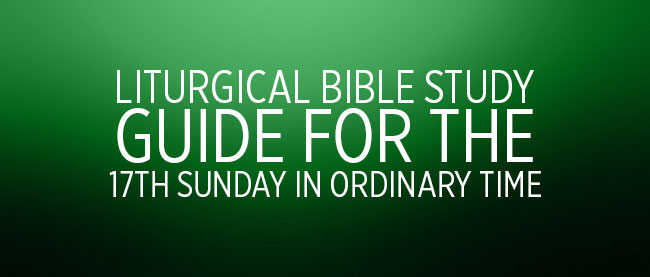1st Reading – 1 Kings 3:5, 7-12
The books of Kings are the fourth part of what tradition calls the Former Prophets (Joshua, Judges, 1st & 2nd Samuel, 1st & 2nd Kings). The division between the books of Samuel and the books of Kings is arbitrary and varies in ancient manuscripts. The division;between 1st and 2nd Kings is even more arbitrary, disrupting the account of the reign of Ahaziah of Israel. In fact, 1st and 2nd Kings form one continuous work.
It has become standard in scholarly studies to refer to the Former Prophets as the “deuteronomistic history” and to deem it the product of a single school, if not a single;author. It is not a work of political or social history, however, but of theological history. It recounts, from a consistent theological point of view, Israel’s life in its own land from the occupation under Joshua to the Babylonian exile. It is less interested in accurately;chronicling events, no matter how important they may seem to the modern historian, than;in explaining the tragic fate of Yahweh’s people. The sources used by the sacred writer(s);are many and varied, ranging from popular tales (1 Kings 3:16-27), and miracle stories (2 Kings 2) to archival records (1 Kings 4:7-19). In Kings, the sacred writer(s) cite three sources by name and repeatedly refer the reader to them for further information: The Acts;of Solomon, The Chronicles of the Kings of Judah, and The Chronicles of the Kings of Israel.;Unfortunately, all three sources are now lost.
It is not certain when the sacred writer (s) compiled the sources into the theological narrative we have today. The final version is believed to date from between 560 and 538 B.C.
Our reading today comes from the beginning of Solomon’s reign as king and it tells us that Yahweh is pleased with Solomon.
2nd Reading – Romans 8:28-30
As we continue our study of the Book of Romans, begin where last week’s reading ended. Recall that this is Saint Paul’s description of the future glory that awaits those who live the Christian life empowered by the Spirit.
Gospel – Matthew 13:44-52
For the past two weeks we have heard Jesus teaching in parables. We have heard of the mustard seed, the sower (with different types of soil), the weeds among the wheat, and the leaven. The roots of the parable as a literary form lie in the Old Testament; particularly in the wisdom literature, and also in rabbinical literature (some two thousand have been counted). The fictitious anecdote leads the listener to concede a point that he does not immediately recognize as pertaining to himself. The story also sharpens the curiosity and attracts attention. The rabbinical parables are told in answer to a question and show that the scope of the answer is broader than the one who asked the question perceived. These purposes are all apparent in the parables of Jesus. Today we complete Jesus’ telling of
parables in chapter 13 of the Gospel of Matthew with the parables of the Hidden Treasure, the Pearl, and the Net.


